Bitter melon is an Asian favorite. Here are a couple ways to cook it.
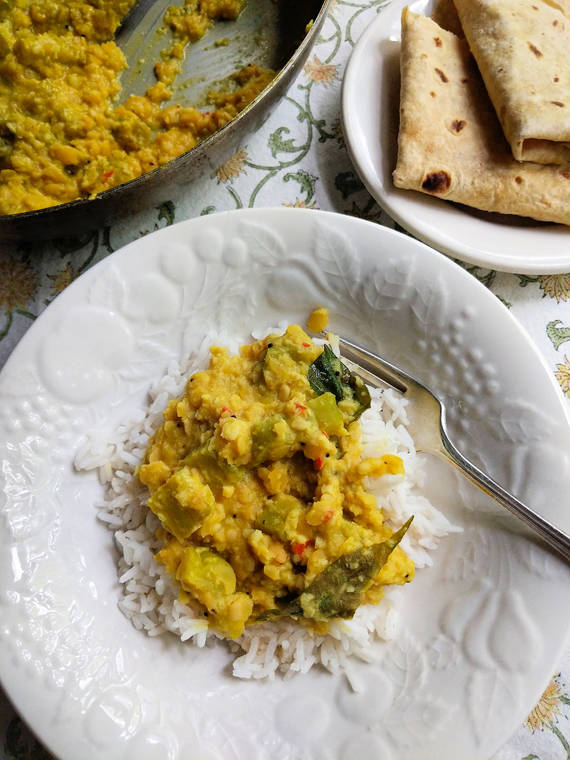
This recipe using bitter melon, known as karela in Hindi, is a favorite in South India. It features a sauce made with toasted urad dhal, red chilies and grated coconut. (Gretchen McKay/Pittsburgh Post-Gazette/TNS)

This recipe using bitter melon, known as karela in Hindi, is a favorite in South India. It features a sauce made with toasted urad dhal, red chilies and grated coconut. (Gretchen McKay/Pittsburgh Post-Gazette/TNS)
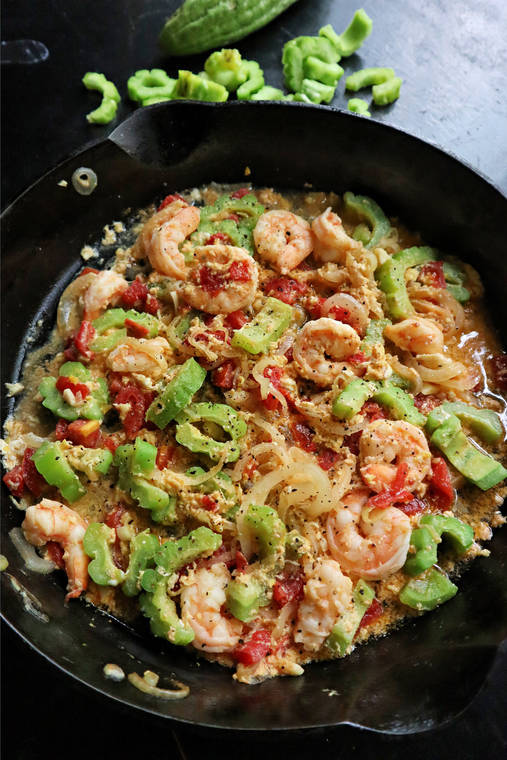
The Filipino stew ginisang ampalaya is made with bitter melon, tomatoes, eggs and shrimp. Nutritious and budget-friendly, it is both savory and slightly bitter. (Gretchen McKay/Pittsburgh Post-Gazette/TNS)
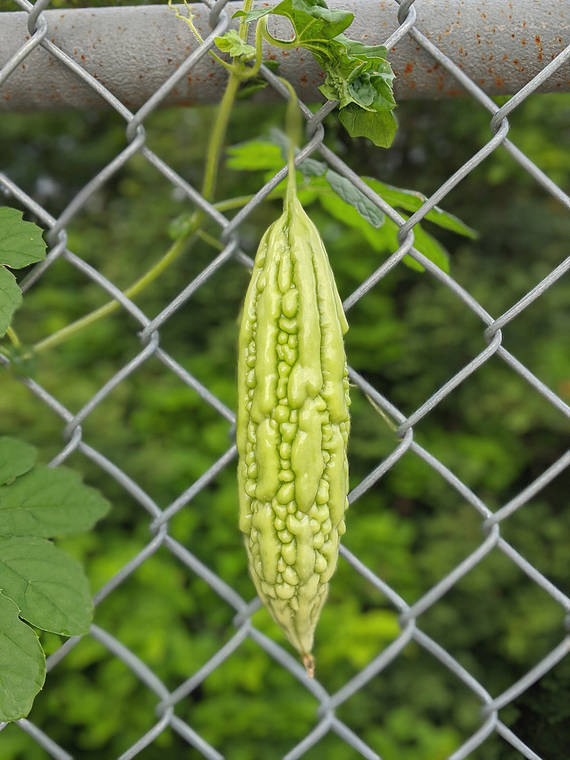
Bitter melon grows on a section of chain link fence along a bridge in Pittsburgh's North Hills. (Gretchen McKay/Pittsburgh Post-Gazette/TNS)
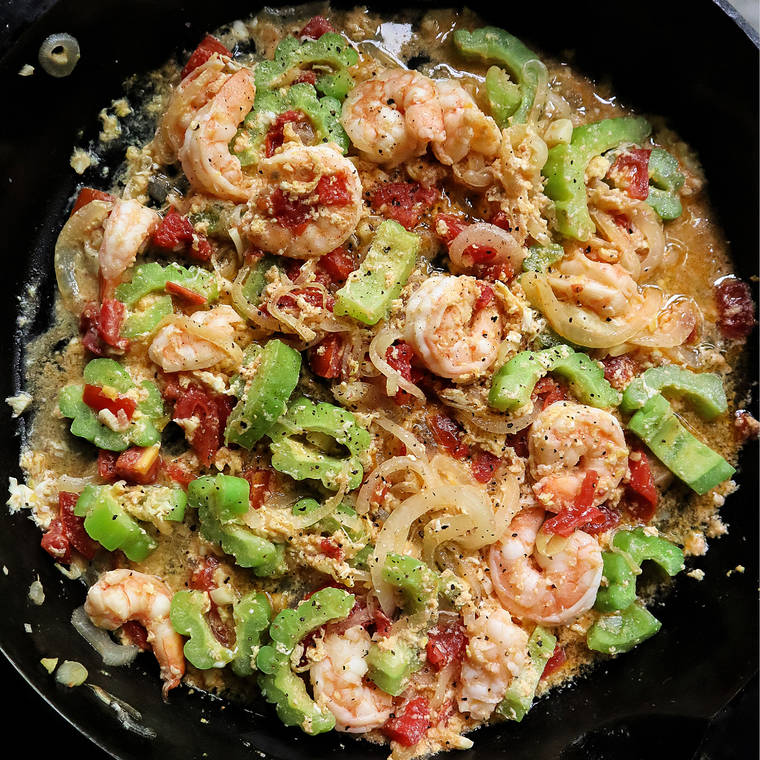
The Filipino stew ginisang ampalaya is made with bitter melon, tomatoes, eggs and shrimp. Nutritious and budget-friendly, it is both savory and slightly bitter. (Gretchen McKay/Pittsburgh Post-Gazette/TNS)
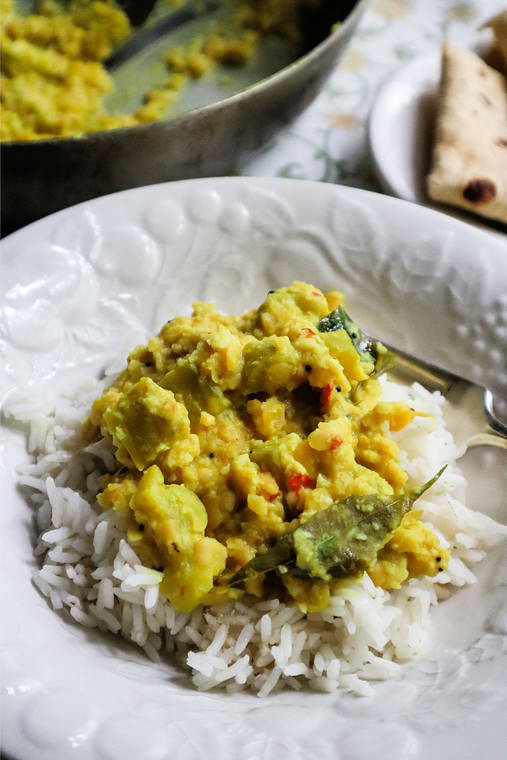
This recipe using bitter melon, known as karela in Hindi, is a favorite in South India. It features a sauce made with toasted urad dhal, red chilies and grated coconut. (Gretchen McKay/Pittsburgh Post-Gazette/TNS)
I see lots of familiar things on my early-morning run through the neighborhood.
I see lots of familiar things on my early-morning run through the neighborhood.
Neighbors walking with their dogs and morning coffee and kids weighed down by backpacks waiting for the school bus are a given. I can also count on a slobbery greeting from my pal Rosie the basset hound, who loves to be patted on the head.
It’s become so routine that I almost stopped paying attention to them. Every so often, though, I catch something out of the corner of my eye that demands a second look.
A few weeks ago, it was a weird-looking, oblong-shaped plant climbing up a chain-link fence on the side of a bridge. What in the heck was it? I stepped closer to find out.
Long and green, it was dangling on a rail from a wispy vine dotted with tiny yellow flowers like some kind of vegetal Christmas tree ornament. Picture a cucumber or zucchini with a super-bad case of warts, or maybe a melted candle. Was it a weed or did somebody plant it there on purpose?
A friend in a food-centric Facebook group had an immediate answer to my query. It was a bitter melon, a tropical vine that belongs to the gourd family. Its edible fruit is a popular ingredient in many Asian cuisines, both because of its texture (it’s crunchy) and its purported medicinal properties (it can lower blood sugar levels). People also adore the fruit’s unique, acerbic taste.
Cooked more like a vegetable than a fruit, bitter melon is a common ingredient in Indian stews and curries, Japanese and Chinese stir-fries, sauteed Filipino dishes and fried snacks. It also can be hollowed out and stuffed with ground meat and spices like squash, be steamed or pan-fried. Some even like to eat it raw or squeeze the fruit into juice.
However it’s prepared, bitter melon is more backup artist than lead vocalist. It is used to counterbalance the richness of the main ingredient rather than outshine it. Its astringent taste pairs especially well with chili peppers and fatty meats like pork.
To say bitter melon has a unique flavor profile is quite the understatement. Never has a fruit or vegetable been so aptly named. The first time you try it, in fact, it might prove so unpleasant on the palate that you may be tempted to spit it out.
“It’s definitely an acquired taste,” admits Jayashree Iyengar of Point Breeze, with a laugh. She teaches classes on Indian cooking at Phipps Conservatory and other venues and is a Maker in Residence at Chatham University’s Center for Regional Agriculture, Food and Transformation. Even though the former Westinghouse mechanical engineer grew up eating it, she never much liked it as a kid. It was only as an adult that she grew to love it.
“As you get older, you like it more,” she says.
She particularly loves it in a stew, where the bitterness can be toned down with tamarind, coconut, chili and salt. Her mother also cooked it in rings dipped in chickpea flour and dusted it with chili powder and salt after deep-frying it.
Thought to have originated in India before making its way to China in the 14th century, there are two varieties of bitter melon: Chinese bitter melon (known as ku gua or lai gua) is less pebbly than the spiky Indian counterpart (known as paavakai in Tamil or karela in Hindi). Some say it also tastes less bitter.
Now common to all tropical parts of the world, the fruit also is known as bitter gourd, bitter cucumber and balsam pear.
So why do we want to eat it if it tastes so unusual?
Two compounds found in bitter melon — polypeptide-p and charantin — have been shown to play a role in lowering blood sugar. It has been used traditionally in Asian countries to treat diabetes, says registered dietitian and nutrition consultant Heather Mangieri. It is also thought to have cancer-fighting properties, although studies have only been done in animal models.
Bitter melon is loaded with key nutrients like folate and vitamin A, a fat-soluble vitamin that promotes skin health and proper vision. It’s especially rich in vitamin C, with a 3-ounce serving dishing up almost 100% of the recommended daily value. It also is low in calories (just 20 calories per cup).
Depending on how it’s prepared, it can add a soft or crunchy texture to your dish, Mangieri says, “and it will help you get your vitamin C needs met for the day.”
As a rule, the smaller and brighter green the melon, the less bitter.
When cooking the fruit, Iyengar says that pairing bitter melon with the right combination of ingredients will make it more palatable. She suggests adding a bit of sourness (as in tamarind) along with some heat (as in chili) and salt. This is not so much to hide the taste but to temper it. She likens it to adding garlic to broccoli to make it more tasty.
Look for half-ripened melons that are firm to the touch and without bruises or dents and store them wrapped in a paper towel in a ziplock plastic bag in the vegetable drawer of the refrigerator for four to five days.
Bitter melon might take some getting used to, says Iyengar, but in this multicultural world, where ethnic foods are commanding a bigger share of the limelight, that unfamiliarity doesn’t have to be a negative. It’s a big, wide food world out there.
“Try it to diversify your palate,” she says, “and try something good that’s new.”
Bitter Melon with Shrimp and Egg
Serves 4
4 medium bitter melons
1 tablespoon vegetable oil
1 large onion, peeled and thinly sliced
3 cloves garlic, peeled and minced
2 large Roma tomatoes, chopped
1 tablespoon fish sauce
1/2 pound medium shrimp, peeled and deveined
1/2 cup water
2 eggs, beaten
1/2 teaspoon sugar
Salt and freshly ground pepper to taste
Cut bitter melons lengthwise and remove seeds and scrape off white pith. Slice into thin half-moons and place in a bowl of salted water to remove some of the bitterness. When ready to use, rinse and drain well,
In a wide skillet over medium heat, heat oil. Add onion, garlic and tomatoes. Cook, stirring regularly, until softened. Add fish sauce and cook for 1 minute.
Add shrimp and continue to cook, stirring occasionally, until shrimp starts to turn pink. Add water and bring to a boil.
Add bitter melon and toss to combine. Cook 2 to 3 minutes, or until most of the water has evaporated and melon is tender but still crisp.
In a thin stream, add eggs and gently stir to distribute. Continue to cook for about 1 minute, or until eggs have set. Season with sugar, salt and pepper to taste, and serve immediately.
Bitter Melon Stew
Serves 4
2 bitter melons
1/2 cup toor dhal or channa dhal, rinsed and drained
2 tablespoons urad dhal
3 small red dried chilies
1/2 cup unsweetened frozen grated coconut, thawed
1/2 tablespoon vegetable oil
1/2 teaspoon black mustard seeds
1/8 teaspoon asafoetida
6 to 8 curry leaves
1/2 teaspoon turmeric powder
1 tablespoon tamarind concentrate
Salt to taste
Cooked rice and papadam, for serving
Cut bitter melons lengthwise in half. Scoop out the inside pulp with seeds and discard. Cut the remaining melon into small pieces about 1/2-inch thick. Set aside.
Place 3 cups water in medium saucepan and bring to a boil. Add toor dhal and reduce heat to low. Cover with a lid, keeping it slightly open since the lentils tend to foam and spill out. Cook for 15 to 20 minutes until dhal is cooked well and easy to mash. Add more water in between if needed. Mash into a paste using the back or a ladle or spoon; set aside.
In a small skillet, make sauce. Dry roast the urad dhal over medium heat until it turns reddish brown and there’s a nutty aroma. Add dried chilies and saute for 30 seconds. Stir in grated coconut and mix well.
Place coconut mixture into a blender (not a food processor) and grind the roasted ingredients into a smooth paste, adding 3/4 cup of water.
Prepare pitlai: Heat vegetable oil in a 2-quart saucepan over medium heat. Once oil is hot, add mustard seeds. When seeds begin to sizzle and pop, cover with a lid. Wait 10 seconds and turn off heat. When popping stops completely, add the asafoetida and curry leaves (have a lid handy because this may also sputter).
Add the chopped bitter melon, turmeric and 1 cup of water. Cook on medium heat until the melon becomes soft but firm (test with a fork), about 10 minutes. Add more water is needed,
Dissolve tamarind concentrate in 1 tablespoon of water and add to pan. Add the ground sauce, and let it simmer on low heat for about 1 minute.
Add cooked dhal and season to taste with salt. Mix well and let it simmer for 2 minutes. Turn off heat, and serve immediately. Pitlai is typically eaten on top of plain cooked rice with papadam or sauteed vegetables.



